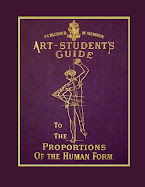
Conrad Martin Metz (1749-1827) published a series of plates, Studies for Drawing, chiefly from the Antique. 30 plates. Fol. London, 1785. S.K., designed for students of drawing to copy in their pursuit of knowledge of the classical ideal. Copy books like these substituted for plaster casts and for live models in the 18th and 19th centuries.











Other books were:
Imitations of Ancient and Modern Drawings, from the Restoration of the Arts - 1798
Metz's studies of the human figure - 1819
Studies for Drawing the Human Figure, Groups of Figures & Historial Composition - 1796
Imitations of ancient and modern Drawings, from the Restoration of the Arts in Italy to the present time. Together with a chronological account of the artists and strictures on their works (in English and French). 109 plates in aquatinta. Atlas fol. London, 1798.
Principj del Disegno, ricavati dagli antichi mouumcnti, dalle opere di Haflaello, Michelangelo, ed altri. Com- binati cd incisi da C. M. M. Fol. Koma, 1812.
Schediasmata selecta ex Archetypis Polidori Caravagiensis in Musaeo hon. Viri A. Hume Bar' conservatis, fideliter hnitata, auctore C. M. M. 64 plates. Fol. Londoni, 1791.
Imitations of Drawings by Parraegiano in the Collection of His Majesty. Engraved and published by C. M. M. 34 plates. Fol. London, 1790.
Studies for drawing the Human Figure was published in 1870. He was born in Bonn, Germany in 1749, and worked in Germany and Italy. He was a pupil of Bartolozzi. Metz was renowned for beautiful classical illustrations, particularly of figures like Mars, Venus and Diana, best known by his numerous imitations and facsimiles of drawings by the old masters He died in 1827.
ARC Prints has a series of lithographed reprints available for sale.








From the Penny cyclopaedia of the Society for the diffusion of useful knowledge published in 1851,
By Charles Knight,
METZ, CONRAD MARTIN, a celebrated German engraver of Bonn, where he was born in 1755. He studied under Bartolozzi, in London, and remained altogether about twenty years in England. He published in 1790 a set of thirty-three engravings, including the title, after George the Third's collection of drawings by Parmegiano ; and in 1791 a set of sixty-three plates in a similar style, after the designs by Polidoro da Caravaggio, in the possession of Sir A. Hume, Bart. He engraved many other imitations of drawings by the old masters. In 1801 Metz went to Rome, and commenced a series of engravings after the Last Judgment in the Sistine Chapel, by Michael Angelo. It is engraved in chalk manner in fifteen separate sheets, with an outline of the whole. Metz died at Rome in 1827, aged seventy-two. Dr. Nagler enumerates upwards of two hundred of his engravings in his Kunstler-Lexicon.
He also worked as an engraver. Here are two of his works for Hans Holbein, The Lady Elliot and Phillip Melanchton.


Books mentioning Conrad Martin Metz:
Der ideale Kunstkörper
The Oxford Guide to Classical Mythology in the Arts, 1300-1990s: 2 Volumes
Metz's studies of the human figure in twenty-eight plates


























Beautiful drawings. Interesting that it was ok to 'copy' rather than draw from life. That seems to be frowned upon now.
ReplyDeleteI agree, for some reason we have embraced the idea that everything must be original or individualistic in order to have any worth. I don't know but I don't suppose any writer would be proud of not reading and being familiar with works from the past, and certainly musicians build on each other's skills. It's the same for artists. The other thing going on was that in the course of study students orocedd from copying casts to drawing from life.
ReplyDelete